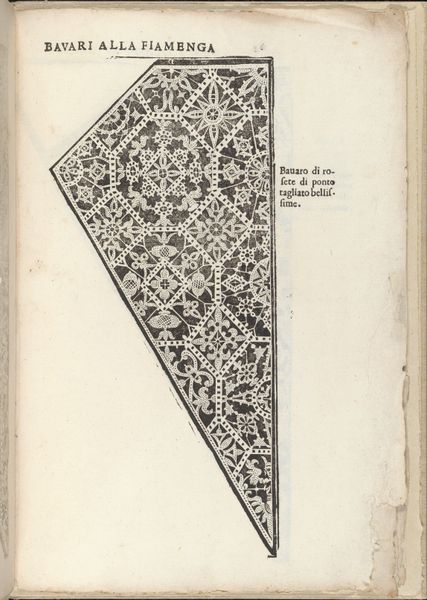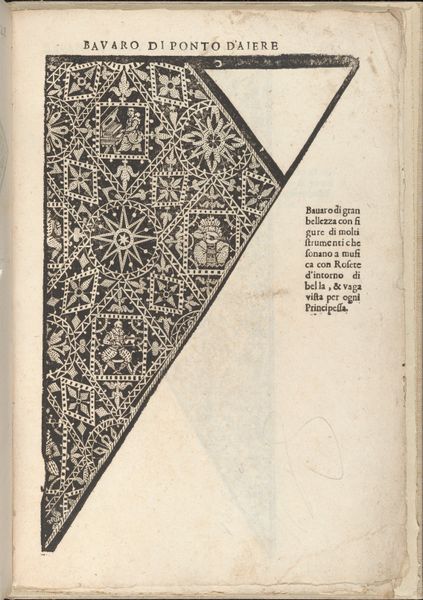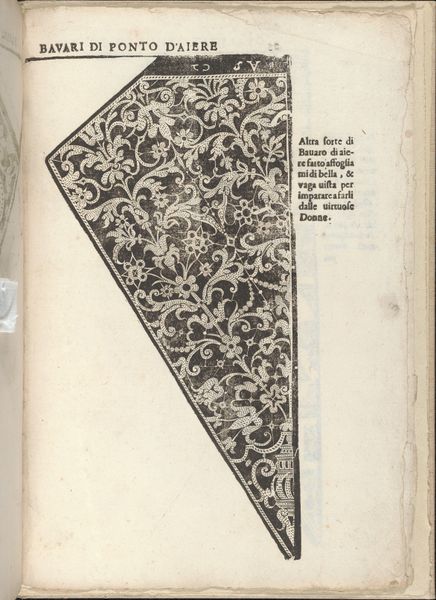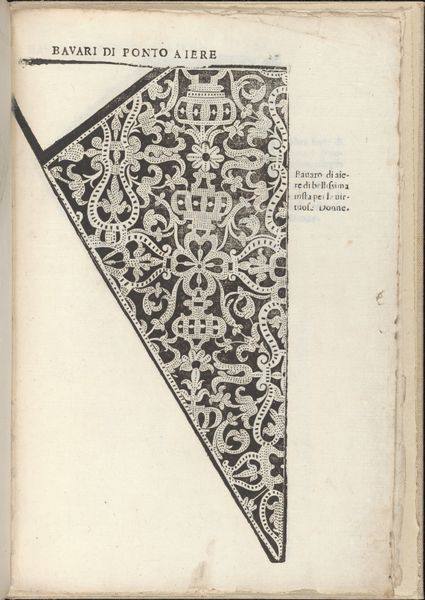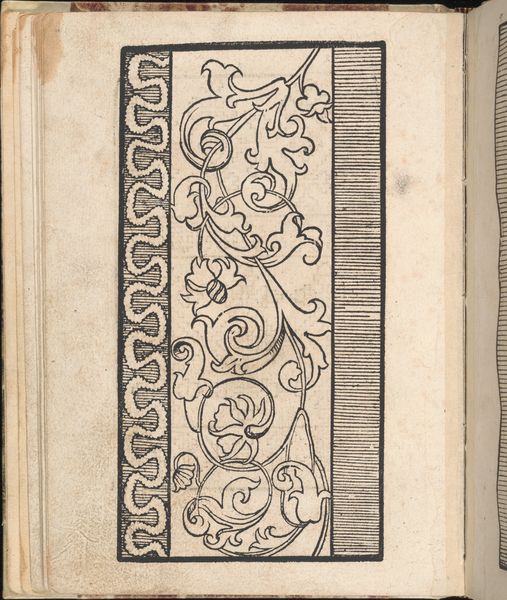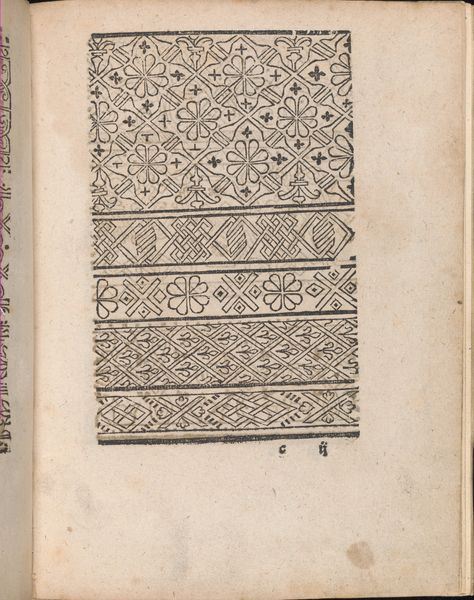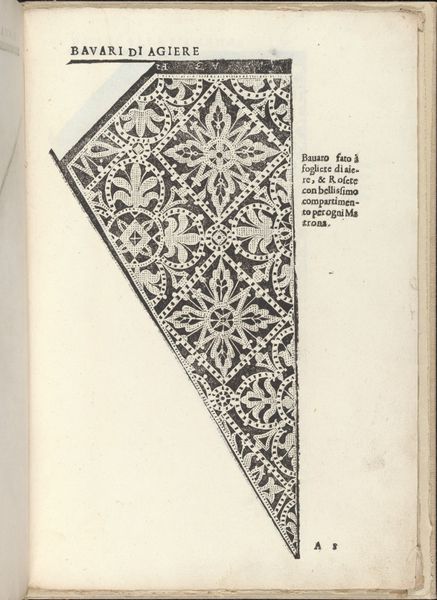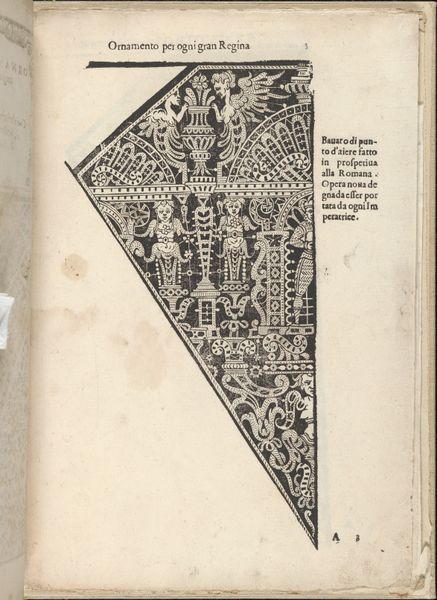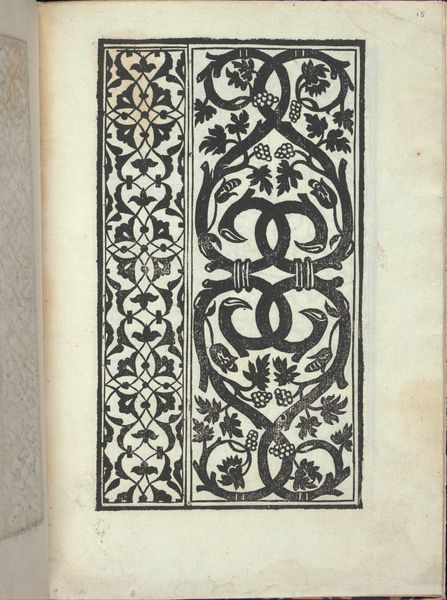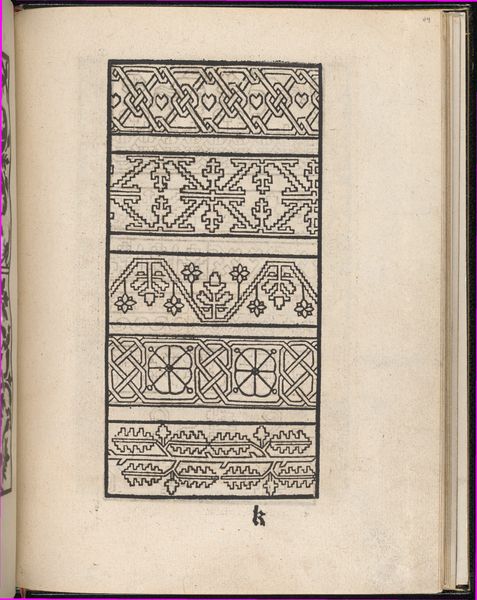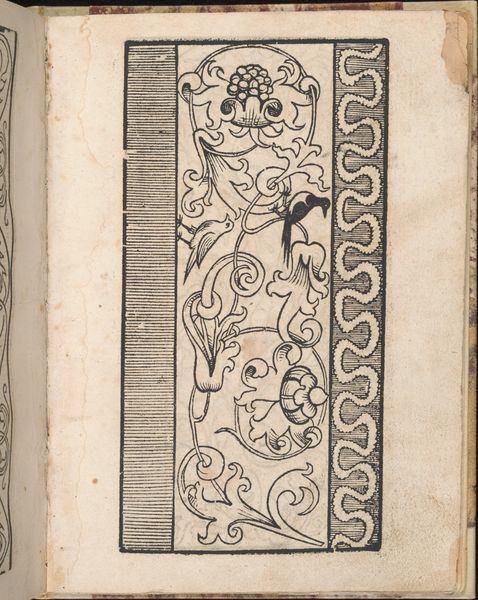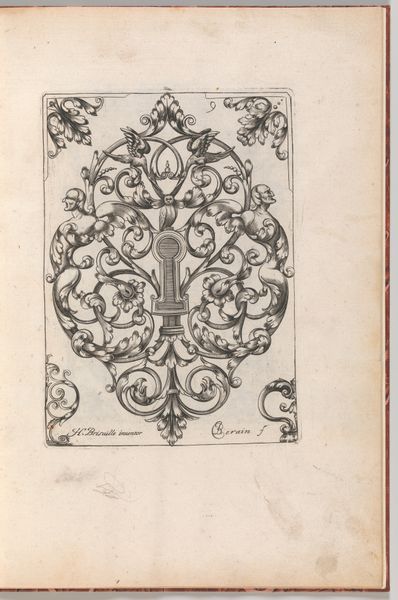
Ornamento nobile...Fatta da Lucretia Romana (Libro V of the Corona), page 15 (recto) 1620
0:00
0:00
drawing, ornament, print
#
drawing
#
ornament
# print
#
book
#
11_renaissance
Dimensions: Overall: 12 3/16 x 8 1/4 in. (31 x 21 cm)
Copyright: Public Domain
Curator: We're looking at a page from Cesare Vecellio's "Ornamento nobile...Fatta da Lucretia Romana," printed around 1620. It's a print showing designs, specifically for lace patterns. Editor: My first thought? A beautiful maze! I want to trace those patterns with my finger. There’s something so tactile about it, even in reproduction. A very intricate design. Curator: Indeed. These weren't simply aesthetic exercises. Manuals like this one documented and disseminated patterns and techniques to artisans, crucially for women in lacemaking trades, influencing regional aesthetics and enabling international exchange of techniques. It connects to female labor, textile production, and early forms of industrial design. Editor: That's amazing. You instantly see its utilitarian value as blueprints, but for me, each figure tucked within these lace designs tells a story. I can see human forms and animals that might appear, little dancers woven into fabric. It breathes life into otherwise geometric shapes. A dance of industry and art! Curator: Well, consider too how the prints themselves were created; the carving of the woodblocks, the paper production—each step relies on distinct labor. The circulation of these books created a community of practice, fostering economic opportunities, specifically through women's crafts. It challenged social norms surrounding labor. Editor: I suppose there’s this conversation that these design guides spark between craft and commerce, inspiration and manufacture... It highlights that what feels innate, and handmade, is influenced by industry. Almost melancholic, in a beautiful way. Curator: Absolutely, the artwork pushes the boundaries of what might qualify as "fine art" versus design or functional art, inviting the study of broader labor and manufacturing of the period. Editor: Reflecting on it all, this image seems like a gentle reminder that creative vision always coexists with the machinery of bringing those ideas to life. It is something made, not divined. Curator: It speaks volumes about the relationship between craftsmanship, trade, and design during the Renaissance. Thank you, that perspective brought the work alive again for me.
Comments
No comments
Be the first to comment and join the conversation on the ultimate creative platform.
